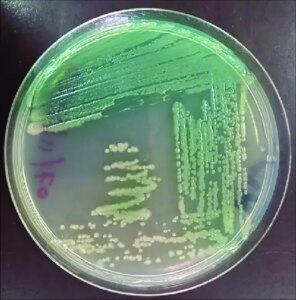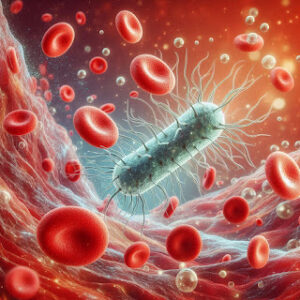The National Testing Agency (NTA) has been conducting the NEET (UG) since 2019 with the approval of the Ministry of Education and Ministry of Health and Family Welfare, in the pursuance of the direction of the Honarable Supreme Court of India. This syllabus has been finalized by the Under Graduate Medical Education Board (UGMEB) and National Medical Commission (NMC) for the National Eligibility cum Entrance Test (NEET) UG examinations for academic session 2025-26.
Here is the detailed NEET Biology syllabus including description of topics for the examination of NEET UG 2025.

NEET Biology Syllabus Units and Detailed Content
UNIT 1: Diversity in Living World
UNIT 2: Structural Organisation in Animals and Plants
- Morphology and modifications; Tissues; Anatomy and functions of different parts of flowering plants: Root, stem, leaf, inflorescence– cymose and recemose, flower, fruit and seed (To be dealt along with the relevant practical of the Practical Syllabus) Family (malvaceae, Cruciferae, leguminoceae, compositae, graminae).
- Animal tissues; Morphology, anatomy and functions of different systems (digestive, circulatory, respiratory, nervous and reproductive) of an insect (Frog). (Brief account only).
UNIT 3: Cell Structure and Function
- Cell theory and cell as the basic unit of life; Structure of prokaryotic and eukaryotic cell; Plant cell and animal cell; Cell envelope, cell membrane, cell wall; Cell organelles structure and function; Endomembrane system- endoplasmic reticulum, Golgi bodies, lysosomes, vacuoles; mitochondria, ribosomes, plastids, micro bodies; Cytoskeleton, cilia, flagella, centrioles (ultra structure and function); Nucleus– nuclear membrane, chromatin, nucleolus.
- Chemical constituents of living cells: Biomolecules- structure and function of proteins, carbodydrates, lipids, nucleic acids; Enzymes– types, properties, enzyme action, classification and nomenclature of ezymes.
- B Cell division: Cell cycle, mitosis, meiosis and their significance.
UNIT 4: Plant Physiology
- Photosynthesis: Photosynthesis as a means of Autotrophic nutrition; Site of photosynthesis take place; pigments involved in Photosynthesis (Elementary idea); Photochemical and biosynthetic phases of photosynthesis; Cyclic and non cyclic and photophosphorylation; Chemiosmotic hypothesis; Photorespiration C3 and C4 pathways; Factors affecting photosynthesis.
- Respiration: Exchange gases; Cellular respiration– glycolysis, fermentation (anaerobic), TCA cycle and electron transport system (aerobic); Energy relations- Number of ATP molecules generated; Amphibolic pathways; Respiratory quotient.
- Plant growth and development: Seed germination; Phases of Plant growth and plant growth rate; Conditions of growth; Differentiation, dedifferentiation and redifferentiation; Sequence of developmental process in a plant cell; Growth regulators: auxin, gibberellin, cytokinin, ethylene, ABA.
UNIT 5: Human Physiology
- Breathing and Respiration: Respiratory organs in animals (recall only); Respiratory system in humans; Mechanism of breathing and its regulation in humans- Exchange of gases, transport of gases and regulation of respiration Respiratory volumes; Disorders related to respiration- Asthma, Emphysema, Occupational respiratory disorders.
- Body fluids and circulation: Composition of blood, blood groups, coagulation of blood; Composition of lymph and its function; Human circulatory system– Structure of human heart and blood vessels; Cardiac cycle, cardiac output, ECG, Double circulation; Regulation of cardiac activity; Disorders of circulatory system– Hypertension, Coronary artery disease, Angina pectoris, Heart failure.
- Excretory products and their elimination: Modes of excretion- Ammonotelism, ureotelism, uricotelism; Human excretory system-structure and fuction; Urine formation, Osmoregulation; Regulation of kidney function-Renin-angiotensin, Atrial Natriuretic Factor, ADH and Diabetes insipidus; Role of other organs in excretion; Disorders; Uraemia, Renal failure, Renal calculi, Nephritis; Dialysis and artificial kidney.
- Locomotion and Movement: Types of movement- ciliary, fiagellar, muscular; Skeletal muscle- contractile proteins and muscle contraction; Skeletal system and its functions (To be dealt with the relevant practical of Practical syllabus); Joints; Disorders of muscular and skeletal system-Myasthenia gravis, Tetany, Muscular dystrophy, Arthritis, Osteoporosis, Gout.
- Neural control and coordination: Neuron and nerves; Nervous system in humanscentral
nervous system, peripheral nervous system and visceral nervous system; Generation and
conduction of nerve impulse. - Chemical coordination and regulation: Endocrine glands and hormones; Human endocrine system– Hypothalamus, Pituitary, Pineal, Thyroid, Parathyroid, Adrenal, Pancreas, Gonads; Mechanism of hormone action (Elementary Idea); Role of hormones as messengers and regulators, Hypo-and hyperactivity and related disorders (Common disorders e.g. Dwarfism, Acromegaly, Cretinism, goiter, exopthalmic goiter, diabetes, Addison’s disease).
UNIT 6: Reproduction
- Sexual reproduction in flowering plants: Flower structure; Development of male and female gametophytes; Pollination– types, agencies and examples; Outbreeding devices; Pollen-Pistil interaction; Double fertilization; Post fertilization events- Development of endosperm and embryo, Development of seed and formation of fruit; Special modesapomixis, parthenocarpy, polyembryony; Significance of seed and fruit formation.
- Human Reproduction: Male and female reproductive systems; Microscopic anatomy of testis and ovary; Gametogenesis- spermatogenesis & oogenesis; Menstrual cycle; Fertilisation, embryo development upto blastocyst formation, implantation; Pregnancy and placenta formation (Elementary idea); Parturition (Elementary idea); Lactation (Elementary idea).
- Reproductive health: Need for reproductive health and prevention of sexually transmitted diseases (STD); Birth control- Need and Methods, Contraception and Medical Termination of Pregnancy (MTP); Amniocentesis; Infertility and assisted reproductive technologies – IVF, ZIFT, GIFT (Elementary idea for general awareness).
UNIT 7: Genetics and Evolution
- Heredity and variation: Mendelian Inheritance; Deviations from Mendelism- Incomplete dominance, Co-dominance, Multiple alleles and Inheritance of blood groups, Pleiotropy; Elementary idea of polygenic inheritance; Chromosome theory of inheritance; Chromosomes and genes; Sex determination- In humans, birds, honey bee; Linkage and crossing over; Sex linked inheritance– Haemophilia, Colour blindness; Mendelian disorders in humans- Thalassemia; Chromosomal disorders in humans; Down’s syndrome, Turner’s and Klinefelter’s syndromes.
- Molecular basis of Inheritance: Search for genetic material and DNA as genetic material; Structure of DNA and RNA; DNA packaging; DNA replication; Central dogma; Transcription, genetic code, translation; Gene expression and regulation- Lac Operon; Genome and human genome project; DNA finger printing, protein biosynthesis.
- Evolution: Origin of life; Biological evolution and evidences for biological evolution from Paleontology, comparative anatomy, embryology and molecular evidence); Darwin’s contribution, Modern Synthetic theory of Evolution; Mechanism of evolution- Variation (Mutation and Recombination) and Natural Selection with examples, types of natural selection; Gene flow and genetic drift; Hardy-Weinberg’s principle; Adaptive Radiation; Human evolution.
UNIT 8: Biology and Human Welfare
- Health and Disease; Pathogens; parasites causing human diseases (Malaria, Filariasis, Ascariasis. Typhoid, Pneumonia, common cold, amoebiasis, ring worm, dengue, chikungunya); Basic concepts of immunology– vaccines; Cancer, HIV and AIDS; Adolescence, drug and alcohol abuse. Tobacco abuse.
- Microbes in human welfare: In household food processing, industrial production, sewage treatment, energy generation and as biocontrol agents and biofertilizers.
UNIT 9: Biotechnology and Its Applications
- Principles and process of Biotechnology: Genetic engineering (Recombinant DNA technology).
- Application of Biotechnology in health and agriculture: Human insulin and vaccine production, gene therapy; Genetically modified organisms- Bt crops; Transgenic Animals; Biosafety issues- Biopiracy and patents.
UNIT 10: Ecology and Environment
- Organisms and environment: Population interactions- mutualism, competition, predation, parasitism; Population attributes- growth, birth rate and death rate, age distribution.
- Ecosystem: Patterns, components; productivity and decomposition; Energy flow; Pyramids of number, biomass, energy.
- Biodiversity and its conservation: Concept of Biodiversity; Patterns of Biodiversity; Importance of Biodiversity; Loss of Biodiversity; Biodiversity conservation; Hotspots, endangered organisms, extinction, Red Data Book, biosphere reserves, National parks and sanctuaries, Sacred Groves.
Chapter-wise weightage for Biology NEET
| Biology Chapter for NEET 2025 | Weightage |
| UNIT 1: Diversity in Living World | 14% |
| UNIT 2: Structural Organisation in Animals and Plants | 9% |
| UNIT 3: Cell Structure and Function | 5% |
| UNIT 4: Plant Physiology | 6% |
| UNIT 5: Human Physiology | 20% |
| UNIT 6: Reproduction | 9% |
| UNIT 7: Genetics and Evolution | 18% |
| UNIT 8: Biology and Human Welfare | 4% |
| UNIT 9: Biotechnology and Its Applications | 3% |
| UNIT 10: Ecology and Environment | 12% |
| Total | 100% |
References
National Testing Agency (NTA)



